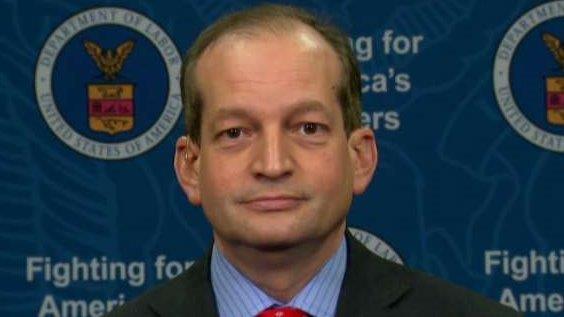US adds 222,000 jobs in June, keeping Fed on course
The U.S. economy added 222,000 jobs in June to surpass expectations, keeping the Federal Reserve on course as it steadily raises interest rates.
After a slow three-month stretch, the latest jobs report from the Bureau of Labor Statistics offered some positive signs. Job gains of 222,000 beat economists’ forecast for 179,000. The unemployment rate inched higher to 4.4% from 4.3%, although more people were actively looking for work during the month. The labor force participation rate was 62.8%, up from 62.7% in May. Average hourly earnings grew 0.2% to $26.25 an hour.
Also, job growth in April and May was stronger than initially reported. The U.S. added 207,000 jobs in April, an upward revision of 33,000. The May jobs report booked an extra 14,000 net new jobs, bringing the month’s total to 152,000.
While job growth picked up, economists see more room for improvement in wages and participation in the workforce, which have been slow to keep pace. Wages faced some downward pressure in June from an increase in government jobs.
“The headline number was a source of surprise, and the revisions were encouraging. The only disappointment was wage growth,†said Eric Wiegand, senior portfolio manager at U.S. Bank. “It creates a bit of a goldilocks backdrop for stocks.â€
Sameer Samana, global quantitative strategist for Wells Fargo Investment Institute, noted that the underemployment rate continues to show the “slack†in the labor market that Fed Chairwoman Janet Yellen often cites. Underemployment includes part-time workers who want a full-time job, as well as skilled workers who hold low-skill jobs.
“There’s an opportunity for more people to come back into the labor force,†Samana said, adding that improvements to the participation and underemployment rates would indicate broader strength. “It’s nice to see the number jump back up…but wage growth is not going higher.â€
In an interview on the FOX Business Network, Labor Secretary Alexander Acosta said the number of part-time employees looking for full-time work remains a little high.
“As we look forward, that’s a number that I’m going to follow to see when the market really tightens and we start to see upward pressure on wages,†Acosta said.
June’s mixed results will likely keep the Fed moving forward at a gradual pace. Economists are looking for one more rate hike of 0.25% this year, likely in December. The Fed is also seen putting a plan in motion to reduce its bond portfolio, which swelled to more than $4 trillion after three rounds of quantitative easing.
“I think this report was within [the Fed’s] realm of expectations,†said Dominic Pappalardo, director of the taxable portfolio management team at McDonnell Investment Management. “There was nothing in this report that was strong enough to convince the Fed to change its course.â€
In its monetary policy report published on Friday, the Fed indicated that it’s prepared to be “slightly more accommodative†if inflation continues to fall short of the central bank’s target.
The increase of 222,000 jobs is a positive signal, but investors are keeping a close eye on wages, Pappalardo added. As the U.S. adds jobs, wage growth normally follows as employers compete for new hires. The longer wages trail behind, the more investors begin to worry that wages will spike.
For now, an unchanged path at the Fed is viewed by investors as a positive for stocks. Samana said investors still have time to align their portfolios and get properly invested.
Pappalardo expects little change in the market’s recent momentum, considering how the June report offered a consistent picture of the U.S. economy.
“Anything that signals slow and steady growth should be a positive for risk markets,†he said.
The Dow Jones Industrial Average gained 54 points, or 0.25%, to 21,374 in recent trading. The broader S&P 500 edged 8.5 points higher, or 0.4%, to 2,418.





















